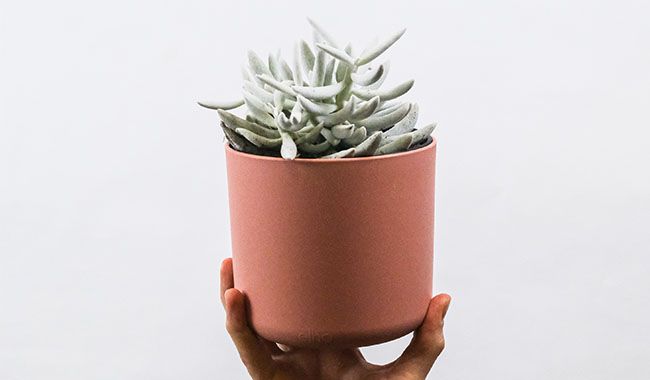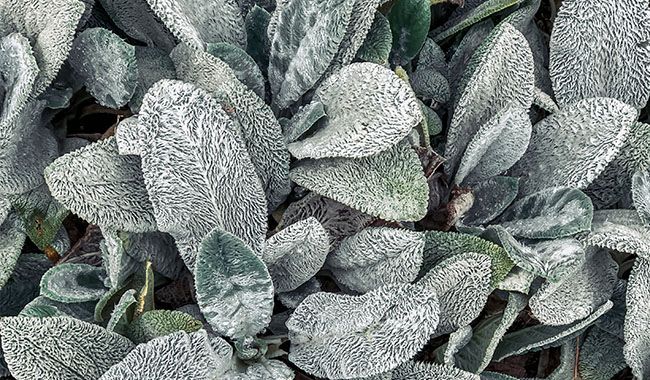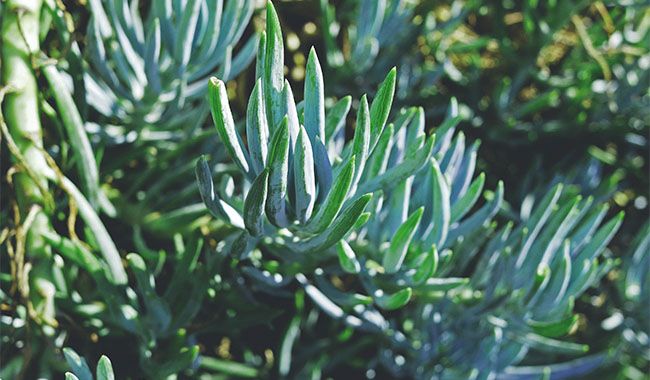
One of the most original indoor succulents is the eccentric Woolly Senecio. Rosettes and their long, fleshy, cylindrical, rod-shaped leaves evoke different associations. For some, they may remind you of a hedgehog or coral. For others, they may resemble asparagus pods or octopus tentacles. Their fur, plush silvery coloration is very regal. Slow-growing and unique in appearance, they are an exceptional succulent for bright flower rooms and compositions. And very easy to grow.
WOOLLY SENECIO PLANT DESCRIPTION
The name Woolly Senecio succulent plant points strongly to its appearance: in Europe and the United States, it is known as woolly senecio haworthii, Caputia tomentose, and “Senecio cocoon plant.” It is one of the brightest and most severely silvery succulent plants.
Woolly Senecio (Senecio scaposus) is an unsurprising species of cruciferous plant with shortened underground shoots that sometimes emerge from the soil and are exposed at the base of the rosette. It is a ground cover plant that produces large numbers of lateral rosettes capable of forming turf and dense mats. The species is quite aggressive in the wild and grows more slowly indoors. Height – only up to 12 inches (30 cm), and for many years it remained relatively compact, not exceeding 6 inches (15 cm) tall.
The dense rosettes are formed by bunches of fleshy, cylindrical leaves with spatulate tips up to 4 inches (10 cm) long. The “stick” slightly curved inward shape can be compared to bananas, corals, and asparagus beans. The young leaves protrude upward like angles, giving the plant an upright, symmetrical appearance. Over time, the oldest leaves droop to the edge of the rosette, somewhat resembling the legs of a spider.
The felting effect is often deceptive and is stronger on the younger leaves. The leaves have a silvery film coating with a bluish-white glow that hides their true texture and green color. It cracks and peels like a film on older leaves, surprisingly having the effect of “peeling” paint or thin parchment.
The flowers of this hybrid are very showy. This plant gets its name from the tall, upright flowering stems that can grow up to 20 inches (50 cm) tall. The daisy-like basket inflorescences, up to 1 inch (2.5 cm) in diameter, are arranged in sparse racemes with 5-6 flowers. They form a loose circle of 12 very bright yellow reed flowers around a solid midpoint of small tubular flowers of the same color.
Woolly Senecio usually blooms in summer, but it is not common indoors: a cool overwintering period should be arranged just for blooming, but succulents are grown mainly for the beauty of their rosettes.
GROWING CONDITIONS FOR WOOLLY SENECIO

Good light is all these cruciferous plant needs. The rosette will lose some of its silvery-white sheens in shade but will still develop very well in a lighter shade. Woolly Senecio can also be placed indoors at arm’s length from a sunny window in any direction. Regular turning allows for a more even rosette to develop. There is no need to adjust the lighting for winter, but if possible, it is best to move the container to the brightest windowsill to maintain its color.
This type of hybrid can withstand even light frosts up to 39 °F (4 °C) frosts, but it is best not to expose the plants to extreme conditions. To flower, you need to overwinter at low temperatures of 53-59 °F (12-15 °C). The foliage grows and retains its ornamental value even in very warm, overwintering conditions. The comfortable temperature range is 53-77 °F (12-25 °C). Woolly Senecio is not afraid of heat.
In summer, take the bushes out for fresh air and use them to decorate balconies or terraces. The species is less sensitive to air currents and temperature differences than some of its relatives and hardly responds to changes and permutations (behaves like Haworthia or cactus).
CARING FOR WOOLLY SENECIO AT HOME

It is hard to find a Woolly Senecio suitable for fancy combination containers, desert compositions, and botanical gardens. This variety requires minimal care and perfectly fits the collection of succulents that look like living sculptures and are the stars of modern and industrial interiors. It is even suitable for people who do not have time to grow plants. The main thing is not to flood the rosettes, soak the plants or leave water in the trays.
This type of Woolly Senecio can even withstand extreme drought. It does not tolerate over-watering but is likely to be considered more water-loving than other species. Watering should be fairly adequate in the summer, but the substrate should be dry to at least half its depth, and there should be no standing water in the trays. In winter, the substrate should be completely dry and the plants watered with a minimum of water to maintain leaf tension. In general, watering Woolly Senecio can be done once in 2 weeks, even in summer (while in winter, it is even better to concentrate on watering once a month).
Fertilization is only necessary for spring and summer. Use a small amount of fertilizer, halving the manufacturer’s recommendation every 2-3 weeks, or full fertilization once a month. Regular all-purpose fertilizers will not work for this plant, but fertilizers specific for cacti and succulents are needed. Excessive nitrogen and overfeeding will result in deformation. If there are any signs of stunting or color changes, fertilization should be temporarily discontinued.
If the plant becomes unstable, falls over, and, due to the loss of the lower leaves, only forms a trunk-like appearance, it can be flooded at planting, or the rosette can be re-rooted.
TRANSPLANTING, CONTAINERS, AND SUBSTRATES
Woolly Senecio can grow in the same composition or container for many years, changing pots only when needed – filling the space completely with its root system. This plant is not afraid to mix with other succulents and cacti.
Woolly senecio’s soil mixture should not have too many nutrients or density. As with other hybrids, this species prefers neutral sandy soil. Even in special substrates for succulents, adding an extra portion of loosening agents (coarse sand, vermiculite, perlite) is better. It grows well in alternative soils and minimal substrates.
The plant needs small containers with good drainage holes. The standard is about 4 inches (10 cm) (if Woolly Senecio is planted in the composition, the space is calculated in the same way). The width does not have to exceed the height. You can simply add a drainage layer to compensate. But even in pots, it should be very high, reaching a third of the height of the pot.
PESTS AND PROBLEMS IN CULTIVATION
Except for moisture rot and wet rot, the plant is almost invulnerable. However, problems with coloring and growth can occur when there is a lack of light and temperature mismatch.
PROPAGATION OF WOOLLY SENECIO RODS
Adult plants that form entire colonies can be divided simply by planting individual rosettes as individual succulents.
Woolly Senecio hybrids can also be cultivated from seed if fresh seeds are available. Pre-germination is mandatory for this species. When sown in slightly moist sand under glass or film and kept at a stable temperature of 73-78 °F (23-26°C), shoots will soon appear. They are very sensitive to excessive watering.
Cuttings (root tip cuttings) are the easiest way to rejuvenate and obtain new plants without splitting the population. Eustoma roots best in spring and summer, but can be rooted at any time of the year. Remove the underside of the leaves and dry the plugs thoroughly. Spread the plugs on lightly sprayed or dry sand to root them. Woolly Senecio will take 4-6 weeks to root without mulch.







